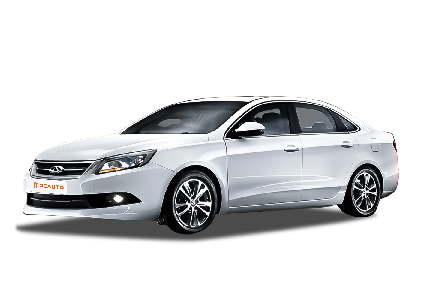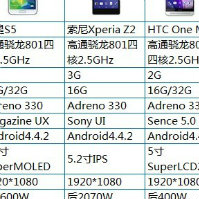

Reference Only. Update Soon
2019 Chery Arrizo 7 1.6 DVVT CVT
Price
TBC
Summary
Core Specs
Highlights
Common Problem
Other Variants
Dealers
Related Q&A
Summary
Meet the 2019 Chery Arrizo 7 1.6 DVVT CVT – a A-Segment Sedan launched in 2019. Starting at TBC, it seats 4 people comfortably. Its size (-mm long, -mm wide, -mm tall) means plenty of room inside. Great for families needing space that's still easy to drive in town.
It handles highways easily with a top speed of -km/h. The -cc engine gives good power and fuel economy. Whether it’s daily drives or weekend trips, this car offers great value, modern looks, and solid performance all in one package.
It handles highways easily with a top speed of -km/h. The -cc engine gives good power and fuel economy. Whether it’s daily drives or weekend trips, this car offers great value, modern looks, and solid performance all in one package.
Core Specs
Segment
A-Segment
Engine Capacity(cc)
-
Transmission
-
Fuel Comsumption (L/100km)
-
Fuel Tank(litres)
-
Top Speed(km/h)
-
Seats
4
Length(mm)
-
Width(mm)
-
Height(mm)
-
Wheelbase(mm)
-
Boot Volume(L)
-
Other Variants
Price
TBC
Body
-×-×-
Engine Power(PS)
-
Engine Torque(Nm)
-
TRANSMISSION
-
Fuel Consumption
-
Related Q&A
View More >Q
Is Mercedes A-Class expensive to fix?
The maintenance costs for the Mercedes A-Class are relatively high, positioning it at a medium level among luxury brands. As a luxury brand, Mercedes vehicles feature high standards in design, materials, and manufacturing processes, which contributes to higher prices for certain parts and repair services. A basic service, including oil and filter changes, costs approximately 900 Malaysian Ringgit, while a three-year, 60,000-kilometer maintenance service amounts to around 8,831 Malaysian Ringgit (excluding labor fees).
Maintenance services are divided into A service and B service. The A service mainly involves an oil change and oil filter replacement, costing between 858 and 1,008 Malaysian Ringgit, whereas the B service is priced at around 1,200 Malaysian Ringgit. The cost of maintenance varies depending on driving mileage, with services at 10,000 kilometers and 50,000 kilometers being less expensive, while the service at 60,000 kilometers is the most costly. However, repair costs can differ based on the specific service, scope of repair, and regions. Furthermore, Mercedes has a comprehensive after-sales service network and offers various service plans, which can help vehicle owners reduce maintenance costs to some extent.
 ShadowHunterMay 14, 2025
ShadowHunterMay 14, 2025Q
What's the Trunk Capacity of Toyota Yaris? Get Idea Here!
The trunk volume of the Toyota Yaris is 286 liters, which can meet the loading needs for daily commuting and shopping. Among models in the same class and price range, it ranks high in terms of trunk volume. Its trunk volume is reasonable, and its loading capacity is quite good. Moreover, the rear seats of some models support a 60:40 split - fold. Once folded down, the storage space can be further expanded. For example, after the 4/6 split - folding of the rear seats in some models, a maximum space of 737 liters can be obtained, which can meet the usage in more scenarios. It's quite convenient to place large items like tents and folding bicycles when going on trips. However, in some models, there is a relatively large gap between the folded seats and the trunk.
 GrinningSmileHappinessJun 26, 2025
GrinningSmileHappinessJun 26, 2025Q
What is the capacity of fuel tank in a Jeep Wrangler?
The fuel tank capacity of a Jeep Wrangler may vary depending on the model and year. Typically, its fuel tank capacity is about 20 gallons.
 NightRiderApr 23, 2025
NightRiderApr 23, 2025Q
What is the fuel consumption of BMW 6 GT?
The fuel consumption of the BMW 6 GT is affected by various factors. Different vehicle models, driving habits, and road conditions can all cause variations in fuel consumption. The combined fuel consumption range revealed by the Ministry of Industry and Information Technology is between 6.8 and 8.2 liters per 100 kilometers. For the 2.0T models, the average fuel consumption per 100 kilometers for car owners is mostly around 8 to 10 liters, and for the 3.0T models, it's about 13.5 liters per 100 kilometers.
In actual driving, the fuel consumption is usually high on short - distance, congested urban roads. Approximately 13 liters of fuel are consumed per 1000 kilometers, which means the fuel consumption per 100 kilometers can reach around 13 liters. On the highway, it's relatively low. Some car owners reported that the fuel consumption per 100 kilometers on the highway can be as low as around 7 to 8 liters. If you have an aggressive driving style with frequent rapid acceleration and hard braking, the fuel consumption will increase. However, if you drive smoothly, anticipate road conditions in advance, and avoid unnecessary acceleration and deceleration, your vehicle can achieve relatively lower fuel consumption.
 XonJun 13, 2025
XonJun 13, 2025Q
What Colors Does Ford Ranger Have? Which Color Do You Like?
The Ford Ranger offers a variety of color options in the Malaysian market to meet the aesthetic needs of different consumers. Common colors include Absolute Black, Aluminum Metallic, Conquer Gray, Frozen White, Saber Orange, and Diffused Silver. Some special - edition models may also offer exclusive color schemes.
 XipJul 10, 2025
XipJul 10, 2025Q
What are the differences between the Bugatti Veyron and the Chiron?
There are differences between the Bugatti Veyron and the Chiron in many aspects. Firstly, in terms of performance, compared with the Bugatti Veyron, the Chiron usually delivers stronger power output and superior acceleration performance. Then, regarding exterior design, the line and style of the two are different, with the Chiron being more modern and sharp. What's more, in terms of the interior configurations, the Chiron uses higher-end materials and more advanced technical configurations. Finally, in terms of price, the Chiron is often higher than the Veyron. However, the specific differences can vary depending on the specific configuration and version of the model.
 TwilightApr 7, 2025
TwilightApr 7, 2025Q
How to start a Toyota Vios?
To start the Toyota Vios, you typically need to insert the car key into the ignition switch, then make sure the gear is in neutral (for manual) or park (for automatic). Next, step on the brake pedal, then turn the key to the "ON" position, wait until the indicators on the vehicle dashboard complete their self-check, then turn the key to the "START" position and hold it for a moment until the engine starts. After starting, release the key and let it automatically bounce back to the "ON" position. However, it should be noted that the specific start-up method of the vehicle may vary slightly depending on the model and configuration.
 WindyHillMar 25, 2025
WindyHillMar 25, 2025Q
What are the main differences between Mark X 250G and 300G?
The Toyota Mark X 250G and 300G primarily differ in engine performance, trim levels, and driving experience. In engine performance, the 250G is equipped with a 2.5L V6 naturally aspirated engine (4GR-FSE), delivering approximately 203 horsepower and paired with a 6-speed automatic transmission. This engine offers better fuel efficiency, making it ideal for daily driving.
In contrast, the 300G adopts a more powerful 3.0L V6 (3GR-FSE), delivering around 256 horsepower for quicker acceleration, catering to drivers pursuing higher performance—though at a slightly higher fuel consumption. While both models share similar exterior designs and base features, the 300G typically adopts premium interior materials, luxury amenities (such as an upgraded sound system or advanced driver-assistance systems), and exclusive sport-tuned enhancements for a more dynamic driving feel. Additionally, the 300G’s suspension may be slightly optimized for improved stability.
In the used-car market, the price of the 300G is higher due to its stronger performance. If fuel economy is your priority, the 250G is the more practical choice; if you focus on power delivery and driving pleasure, the 300G is worth considering.
 SwimmerStrokeMay 15, 2025
SwimmerStrokeMay 15, 2025Q
When Was Perodua Ativa Launched?
The Perodua Ativa was launched in March 2021. It was the first new vehicle developed by the original manufacturer using the DNGA platform and the first model to feature a turbocharged engine. Positioned as an A-Segment SUV in the market, it was one of Perodua's most expensive new cars at that time. Since its launch, it has been selling quite well, with an average annual sales volume of over 25,000 units. Starting from 2023, its sales volume exceeded that of some of its competitors, and in 2024, it became the best-selling SUV model in the Malaysian market.
 HunterQuestJun 23, 2025
HunterQuestJun 23, 2025Q
What's the Fuel Consumption of Toyota Yaris?
The fuel consumption of the Toyota Yaris varies depending on the model version. For the 2023 and 2024 models of the Toyota Yaris 1.5E and 1.5G, the official combined fuel consumption is 7L per 100 kilometers. In addition, if the Toyota Yaris Cross is equipped with hybrid technology, it can achieve a combined fuel efficiency of 26.3 kilometers per liter. The actual fuel consumption of a vehicle is affected by various factors such as driving habits, road conditions, and vehicle load. For example, rapid acceleration, sudden braking, frequent starting and stopping, or an overloaded vehicle can all increase fuel consumption. If you want to reduce fuel consumption, it is recommended to develop good driving habits, maintain a stable speed, and plan your trips reasonably.
 InventorJun 25, 2025
InventorJun 25, 2025